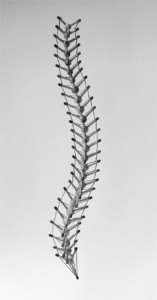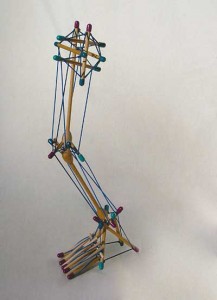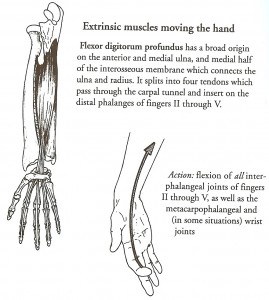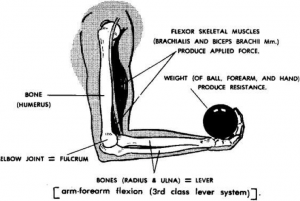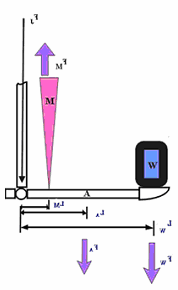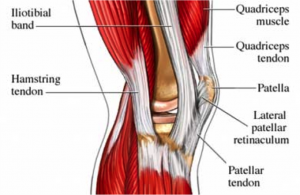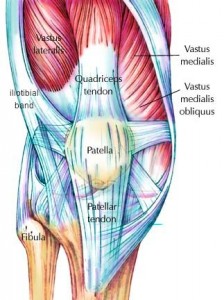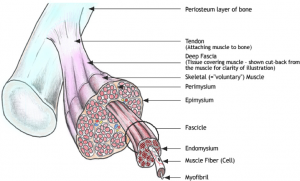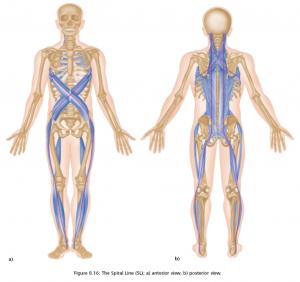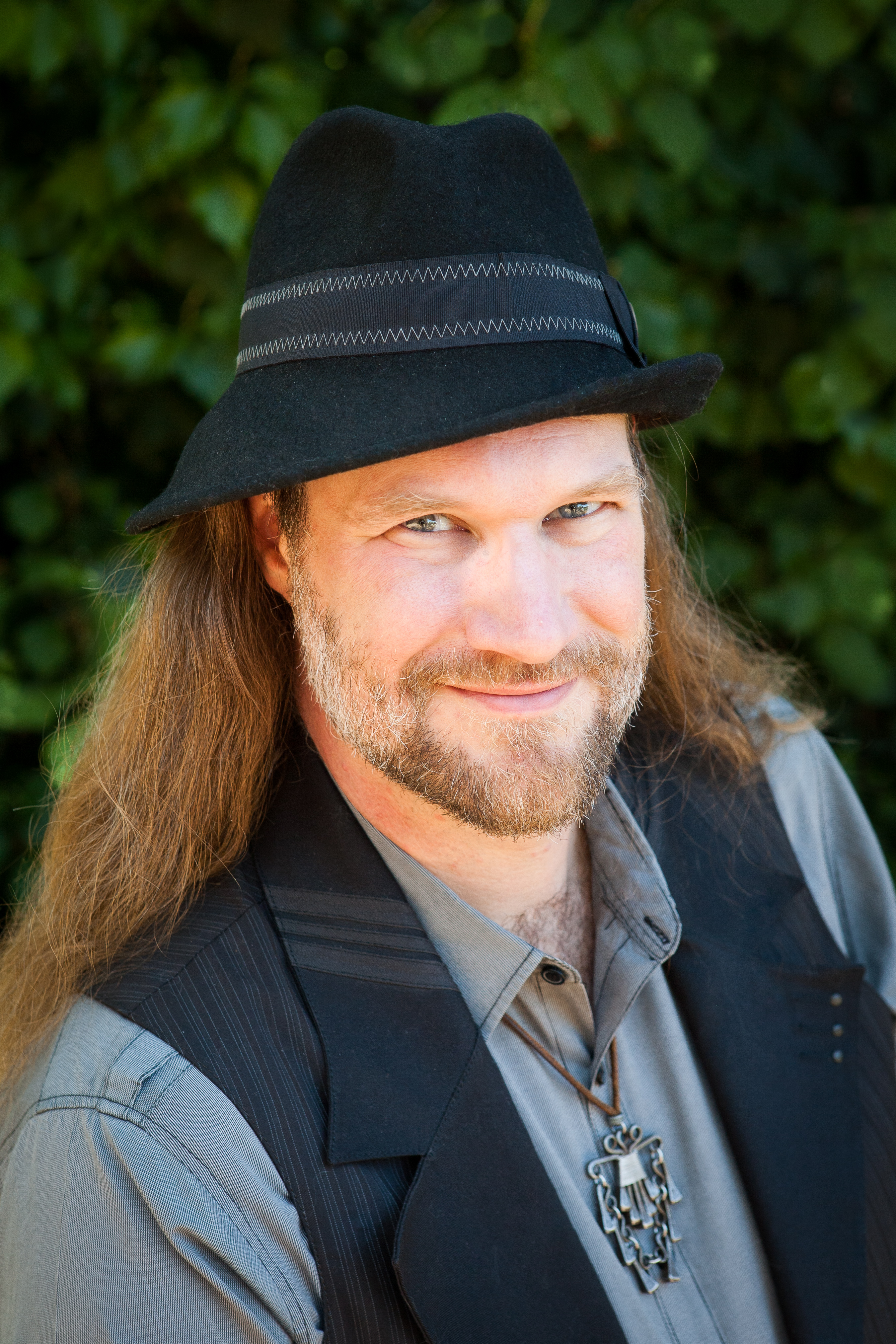Biotensegrity is a new(ish) approach to understanding how bodies work based on the insight that we are primarily tensegrity structures and our bones do not directly pass load to each other. Thus, forces primarily flow through our muscles and fascial structures and not in a continuous compression manner through our bones. In fact, our bones do not directly touch each other, and are actually floating in the tension structure created by our fascial network. Thus, biotensegrity represents a significant conceptual shift from the common sense view that our bones are the load bearing structures in our bodies like the framing of a house.
The first person to start applying tensegrity concepts to complex biological organisms was Dr. Stephen Levin, an Orthopedic Surgeon. He has been studying and writing about this concept for over 20 years. He makes the compelling point that looking at the bones as a system of continuous compressions members, like the beams and rafters of a house, results in force calculations predicting the shearing and crushing of bones under regular daily loads. It is only by modeling the transmission of forces in the tensional members of our bodies (the muscles and connective tissue) that we can account for our ability to perform simple everyday tasks. He has a number of informative papers on his site, I would recommend starting with The Tensegrity-Truss as a Model for Spine Mechanics: Biotensegrity.
Another major contributor to the field of Biotensegrity is Tom Flemons. Since 1985 Tom has been actively involved in designing and inventing tensegrity representations of human anatomy and his models help highlight key principals of biotensegrity.
Tom builds a number of tensegrity models of the spine. A common conceptual model of the spine is that the vertebrae are stacked on top of each other and pass force compressively from one to the other. Problematically, this implies that all the force is passing through the soft disks between the vertebrae. If that were happening, those disks would be crushed and ground apart as we move and rotate our spines around. Tom’s biotensegrity spinal models show that it is possible to build a flexible and mobile spinal column where the vertebrae float apart from each other without touching.
What is interesting about these models is that you can press down on them, rotate them, turn them upside down, and as long as the tension members stay intact, the vertebrae stay separated. This is exactly the type of property one desires in a living moving structure. In fact, it helps highlight the cause of common spinal dysfunctions like bulging disks. If the tension network (i.e. fascial web and associated muscles) becomes weak due to injury or lack of appropriate exercise, then it cannot necessarily hold the vertebrae apart anymore. Thus, in a weak back the experienced forces will start passing compressively through the disks between vertebrae, causing them to crush and bulge out. Our highly sedentary lifestyle encourages the atrophy of critical weight-supporting spinal muscles. As a result we suffer from back pain, bulging disks, and other failures of the spine. Go exercise!
What is fascinating about Tom’s model of the leg is that the “bones” are able to float without touching each other at the knee. This separation can hold, even when one pushes down on the top of the model simulating the weight of the rest of the body. This matches human function — if our bones end up touching it becomes a source of dysfunction. In my own experience, I’ve had multiple knee surgeries and found for some years that my knee would crunch and grind under certain conditions. This was amazingly painful and would lead to inflammation and trouble. As I strengthened and rebalanced the tension in my leg muscles the joint was able to gain more space again and my bones stopped grinding on each other. The body’s natural reaction to force applied to bones is to grow more calcium deposits. Thus one possible explanation for arthritis is that the tensegrity structure around the joints was too weak and the bones were rubbing, when they shouldn’t be.
Tom’s biotensegrity models are static models and only show the distribution of forces for a certain pose of the leg. Thus, they do not look exactly like a full anatomical model of the leg because a real leg moves through a wide range of motion. How to take these static models of single poses and apply them conceptually to a living, moving, dynamic structure will be the topic of a future post.
UPDATE To see some of my recent work on applying biotensegrity concepts to robotics, see my post on a robotic tensegrity snake, development of a tensegrity based planetary lander, and a video of a lecture I gave in Switzerland.
